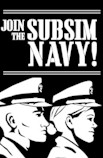Authur: Ian Johnston
Publisher: Seaforth Publishing (UK)
Naval Institute Press (US)
Year: 2011
(Clydebank Battlecruisers),
2014 (A Shipyard at War)
Reviewer: Daryl Carpenter
John Brown's shipyard in Clydebank, Scotland is in a unique position
when it comes to modern naval history. It was the first British shipyard
to employ an in-house photography department, which it continued to
employ even during the Depression. It built many of the most famous
British ships of the 20th century, including the Aquitania, Lusitania,
Hood, Barham, and the three Cunard Queens. Although the company
collapsed in 1971, more than 40,000 of their negatives are currently
stored at the National Records of Scotland. These archives have allowed
Ian Johnston to publish a pair of fascinating books on the shipyard's
early 20th century output, Clydebank Battlecruisers and A Shipyard at
War.
Although much has been written and debated about the combat
effectiveness (or lack thereof) of the Royal Navy's battlecruisers,
Clydebank Battlecruisers focuses on the prehistory of these ships.
Depicting the five battlecruisers built by John Brown shipyard
(Inflexible, Australia, Tiger, Repulse, and Hood) between 1906 and 1920,
the majority of the book consists of rare photographs of the ships
scanned directly from the original glass plate negatives, showing their
construction, launching, fitting out, and steam trials.
What makes the book invaluable for modelers and fans of early 20th
century warships is the extremely high quality of the photographs. Plate
glass photography required long exposures, but the results were
frequently stunning. While some are a little overexposed or out of
focus, the majority of the photos are extremely crisp and fine grained,
frequently atmospheric, and often loaded with detail. People used to
seeing grainy, blurry photographs of warships of this period will no
doubt be taken aback my how GOOD most of the pictures look. One can
actually count the number of rivets on Inflexible's stern casting, note
the location of each of the butt straps on Repulse's hull, and read the
chalk markings on the beams of Hood's main deck.
Clydebank Battlecruisers would make an excellent addition to the library
of any serious naval enthusiast. Having spent an awful lot of time
poring over the detailed diagrams in the "Anatomy of the Ship" books on
the Hood and Dreadnought, it provides an invaluable photographic
companion to those works. The accompanying text and photo captions are
informative and useful, as are the appendixes. The photographs sometimes
run through the binding, although thankfully important details like
masts and funnels don't get lost in the gutter.
A Shipyard at War is both a companion and successor to Clydebank
Battlecruisers, and although it shares the same format and page count,
it's much "busier" historically. Rather than focusing on one particular
ship or type of ship, it offers up a tasty smorgasbord of rare
photographs sure to please serious maritime history buffs. The majority
of the photographs focus on the building and fitting out of the 54 ships
(including 37 destroyers, four capital ships, three submarines, and two
ocean liners) constructed at the yard between 1914 and 1919. The images
are presented chronologically, although the book is more of a
"scrapbook" than Clydebank Battlecruisers; that book featured a good
deal of text, while A Shipyard at War is mostly photographs bookended by
a brief introduction and a timeline of the yard's wartime work.
For the capital ship fans, Tiger, Repulse, and Hood, are all represented
by images cut from Clydebank Battlecruisers, while Barham receives a
healthy dose of construction and fitting out shots. The famous Cunarder
Aquitania occupies almost the entire first quarter, from keel laying to
launching and fitting out. The remainder of the yard's wartime work
takes up about three-fifths of the book. There are detailed shots of the
interior of the submarine E35, photos of ships passing down the Clyde or
arriving for refits and machinery installations, and images of Mark IV
tank hulls under construction, machinery components prior to
installation, and female "dilutees" at work. There is a LOT of good
stuff here - trying to describe it all would be hopeless! There's even
an adorable shot of a tiny narrow-gauge locomotive blowing it's whistle
as it steams past the hull of the Repulse!
As with Clydebank Battlecruisers, many of these photographs are of
extremely high quality, and once again, you can see individual rivets in
the ships' hulls. Unfortunately, Seaforth still hasn't gotten the hint
that it's a bad idea to plop a photograph of a ship across two pages in
a way that masts and funnels end up falling into the gutter. The problem
isn't quite as epidemic here as it was in British Cruisers of the
Victorian Era, but it's present enough to be irritating. Some of the
photographs are overexposed or damaged, and many are faded along the
edges. As sacrilegious as it might sound, a little bit of subtle
photoshopping wouldn't have hurt.
A couple of minor issues aside, these two books are little treasure
troves, and invaluable additions to the maritime archaeology of 20th
century Britain. You can almost hear the pounding of hammers, the
whistling of steam, and the soft whirring of shipyard cranes in many of
these shots. With these two books, and The Battleship Builders, all
published in the last five years, Ian Johnston is definitely a naval
historian to look out for. I couldn't help but notice that the
introduction to A Shipyard at War mentions that John Browns'
photographers took 1,016 photographs of the Queen Mary between 1929 and
1936. This liner buff would grab a copy of Building the Queen Mary in a
heartbeat if anyone publishes it in the near future (hint, hint...).


 Clydebank
Battlecruisers &
Clydebank
Battlecruisers &  Discuss this
book review
Discuss this
book review 
